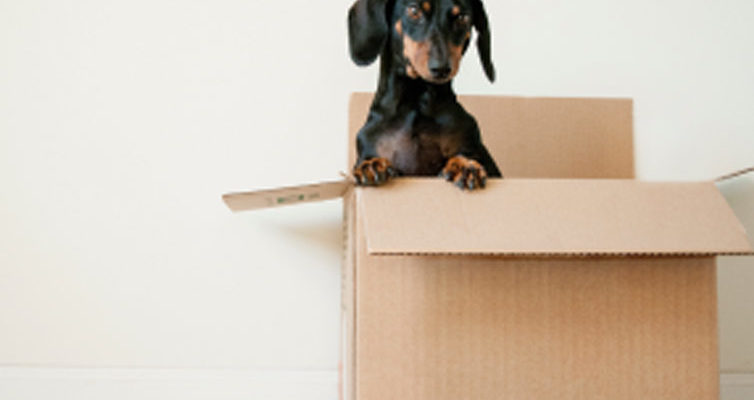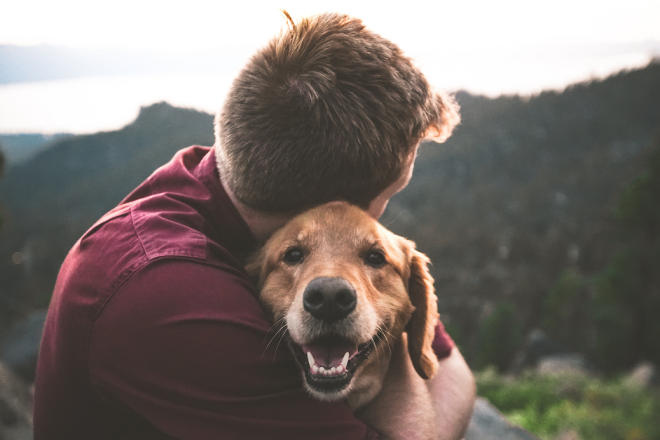After you’ve found pet-friendly housing and are ready to move, follow these recommendations to keep your pet safe on moving day. Plan ahead. Advance planning will make your move less stressful on you and your pet. Pack over a period of time, and try to maintain your pet’s normal routine. Invest in a high-quality, sturdy pet carrier. If you have a dog or cat whom you want to keep safely confined on moving day, get a carrier ahead of time and gradually accustom your pet to spending time in the carrier.
Purchase a new ID tag for your pet. As soon as you know your new address, get a pet ID tag with this information and telephone number. (or obtain some other visible form of pet identification, such as a collar with ID information imprinted on it or an identification band that attaches to the collar but does not dangle like a traditional tag.) An up-to-date ID tag is a lost pet’s ticket home.
Keep your pet secure. On moving day, place your pet (whether in the carrier or not) in a safe, quiet place, such as the bathroom, so that he or she cannot escape. Place a large sign the door that says, “DO NOT ENTER,” and be sure that your friends or professional movers are aware that the room is off-limits.
Make your car trip safe. If you’re traveling by car and your dog enjoys travel, you may want to accustom him to a restraining harness. Because most cats aren’t comfortable traveling in cars, and for their own safety as well as yours, it’s best to transport them in a well-ventilated and securely placed carrier. Never leave pets alone in a parked vehicle during warm weather as the temperature rises quickly and can injure or kill them. In any season, a pet in a parked vehicle during warm weather as the temperature rises quickly and can injure or kill them. In any season, a pet in a parked vehicle is vulnerable to being harmed or stolen. Never put an animal in the trunk or open bed of a pickup truck or in the storage area of a moving van. Talk to your veterinarian. If your pet doesn’t enjoy car rides, consult with your veterinarian about behavior modification that might lessen the stress of travel. Depending on your destination, your pet may also additional vaccinations, medications, and health certificates.
Cats
For the first few days, it’s smart to confine your cat to one room of your new home while you work on putting the rest of the place in order. Prepare the room with your cat’s bed, litter box, food and water bowls, and toys. Now is the perfect time to make your cat an indoor-only pet. Indoor only cats live longer and healthier lives. Resist attempts by your cat to go outdoors. If your cat hasn’t established an outdoor territory, he or she is less likely to be interested in going outdoors. Accessories such as window perches can ease the transition. If you play with your cat and supply lots of attention, your cat should have all he or she needs indoors.
Dogs
Ideally, your dog’s first introduction to his or her new home will be familiar furniture already in place, including his or her bed and crate, toys, and food and water bowls. if you must be away from home for many hours each day; look into having a pet-sitter visit with and walk your dog or consider dog car.
Veterinary Care
As soon as possible, choose a veterinarian and take a practice drive to the nearest emergency vet clinic. Trying to find it when you really need it can waste precious time. Also learn basic pet first aid.
Applewhite Movers wants to make it easy on you… Seriously!
That is why we offer packing and moving services so you can focus on more important things.
Call us at 256-430-1198 or fill out a quote form online.





